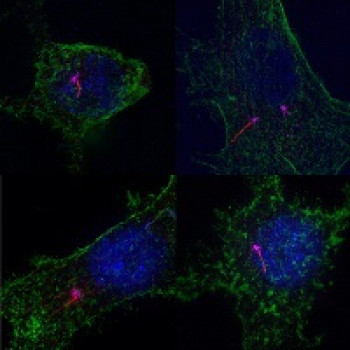Project
The Role of the Primary Cilia in Tendinopathy
| Primary Investigator: | Daniel Rowson |
| Co-investigators: | Hazel Screen |
| Martin Knight | |
| Funder: | EPSRC |
Chronic tendon disease, known as tendinopathy, is often painful and difficult to treat successfully. The prevailing theory for the cause of tendinopathies is that they are overuse injuries. However, the mechanisms by which an overuse injury becomes a chronic tendinopathy is not fully understood. One potential part of the puzzle is the primary cilia. The primary cilia are organelles found on almost every cell in the human body, usually one per cell. The primary cilia is thought to have two main purposes, mechanotransduction and signalling transduction.
Work done in cartilage has suggested that cilia mediated signalling may be abnormally regulated in osteoarthritis. It has also been shown that cilia in tenocytes (tendon cells) react in response to the application of mechanical loads to tendons. Therefore it seems likely that the cilia play a role in tendinopathy, and that is what this PhD aims to investigate.
Cilia can change in length and these length changes are known to have effects on the rate of cell signalling and mechanotransduction in other tissues. We have identified a differential length change between cilia in the fascicle and those in the inter-fascicular matrix of rat tail tendon after stress deprivation and have published a paper in the Journal of Orthopoedic Research detailing the findings. (http://onlinelibrary.wiley.com/doi/10.1002/jor.23229/abstract)
Following on from this we are trying to identify the mechanism for the changes in length as well as what effects the zonal variation may have on cell signalling and its relationship to tendinopathy. We are doing this through in vitro cell culture loading experiments and have observed significant effects on cilia length with loading


